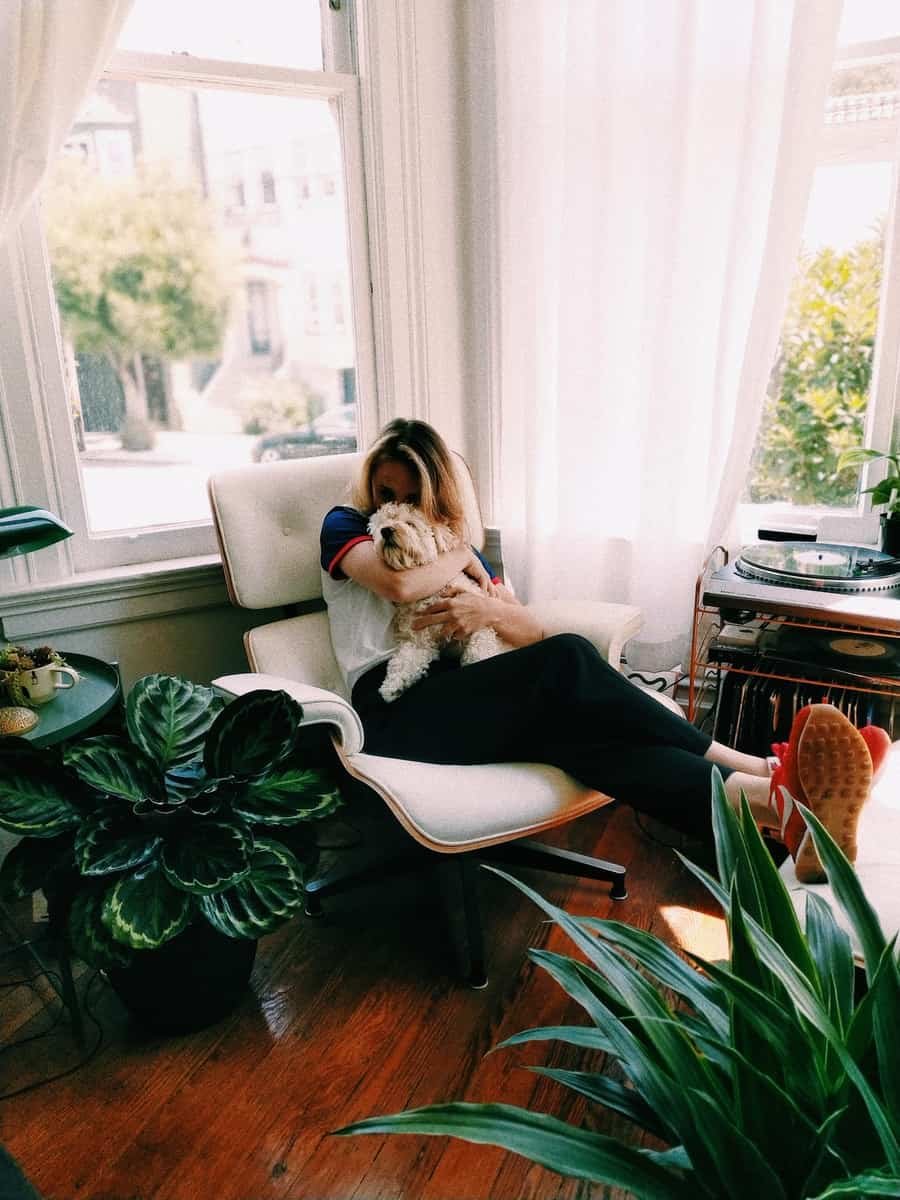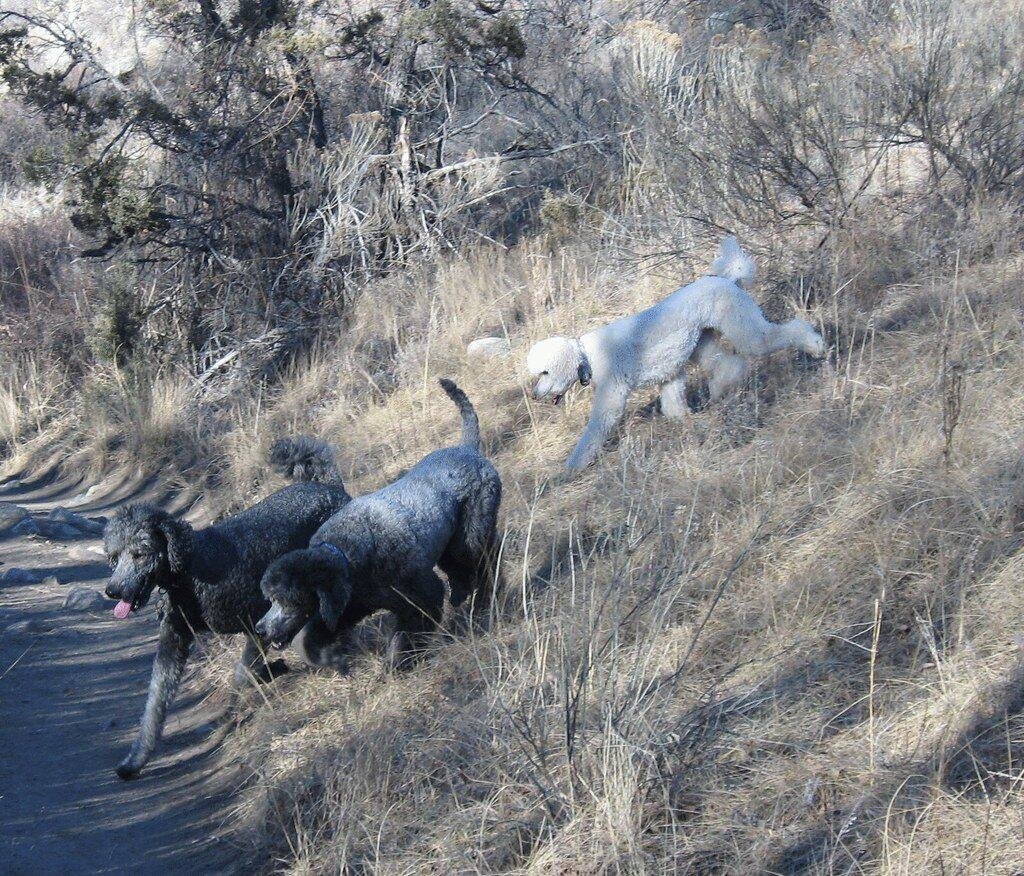Death is inevitable. For us pet owners, it’s a part we hate thinking of for us pet owners, but one that we will eventually face.
When talking about pet Poodles passing, you can find many articles about the stages of grief, where to find a pet cemetery, the euthanasia process, and how to deal with such a challenging time. However, there aren’t a lot of resources talking about natural deaths.
Learn about the common signs your Poodle is dying so you can prepare to keep your best canine buddy as comfortable as possible.
Your Poodle Lost Interest
When Poodles approach the end of their lifespans, they lose interest in everything around them. Your Poodle won’t jump excitedly to greet you, feel eager to go for walks, eat its favorite food, or play with its favorite toys.
Unfortunately, this is usually one of the first warning signs your Poodle’s life is decreasing.
Losing interest can come from your dog feeling more tired, experiencing pain when moving around, or having mobility issues.
Depression
Poodles experience the common symptoms of depression. It isn’t because your pet knows it’s dying, but more likely because it doesn’t feel good.
Here are signs you must watch out for:
Loss of interest in activities your Poodle used to love
Disinterest in food, even your Poodle’s favorite food
Stops responding to attention
Feel withdrawn
Changes in sleeping patterns
While depression is treatable, it won’t be easy addressing this condition if your dog is dying.
Loss of Coordination
It’s common for Poodles to lose coordination when reaching the end of their life. That’s because they don’t have the muscle strength they once had, causing balance issues.
Poodles might have poor eyesight, affecting their balance and coordination.
While many disorders would cause coordination loss, your Poodle developing a series of different symptoms is a bad sign.
Incontinence
Older dogs usually lose control of their bladder. It’s not a significant sign your dog is dying, but a part of the aging process. Incontinence is also a symptom of other treatable health problems, so it’s best to take your dog to the nearest clinic for veterinary advice.
But if the incontinence develops quickly and your Poodle experiences other signs of pain and discomfort, then he’s most likely nearing the end of life.
Shallow Breathing
Normal bodily functions will start breaking down when a Poodle is very close to his demise, causing him to breathe oddly. The same goes for humans, who have agonal breathing near actual death.
Your Poodle’s breathing would either be very slow or fast. The breathing can also be normal for a while, become labored, then return to normal.
Take your dog to the nearest clinic or emergency hospital if your dog experiences this symptom, as it may also be a symptom of a health condition or chronic illness. Labored breathing or a low respiratory rate is considered a medical emergency but may be treatable.
However, if your Poodle has a terminal illness or is of age, agonal breathing is usually the last sign your dog is dying.
Do monitor your Poodle’s breathing and heart rate during this time. Usually, a dog should have 10-35 breaths per minute and 60-160 beats per minute, depending on the size. If it’s anything slower or faster than that range, or if you notice a heart murmur, then it’s best to take your dog to the vet right away.
Extreme Lethargy
Lethargy looks like depression and can happen at the same time. But some Poodles can also experience lethargy without depression.
Regardless, Poodles nearing the end of their lives don’t move around as much as they used to. You’ll notice that your dog lies down a lot more, has a disinterest in food, and doesn’t want to walk or play.
Lethargy is common and may show your canine companion is sick or with an electrolyte imbalance. But if it’s unexplained or paired with other symptoms and old age, it’s a sign of pain and actual death.
Significant Appetite Changes
A common sign you need to look out for is a loss of appetite, causing weight loss. Poodles would stop eating if they feel bad or have gastrointestinal symptoms.
That said, this sign can also mean your beloved family pet is simply stressed or sick, requiring an appetite stimulant. Talk with the veterinarian for expert advice, as appetite changes are also signs of disease. A decrease in appetite may also be an early sign of kidney disease, which requires immediate treatment.
But if there is an unexplained lack of appetite and extreme weight loss, then your dog’s quality of life is declining.
Gastrointestinal Symptoms
Gastrointestinal issues are a less common sign, but some Poodles can develop stomach issues as they reach the end of their lives. Such symptoms can include vomiting, nausea, or severe diarrhea.
These health issues happen because your dog may have digestive issues. Your Poodle’s decrease in appetite can cause nausea.
That said, gastrointestinal issues are common signs of disease. Seek expert advice from the vet before assuming.
Look for Comfort
A Poodle can become clingier towards his pet parent as they approach their end of life. Some dogs seek comfort in their owners when they don’t feel well, finding peace of mind.
However, comfort-seeking isn’t a prevalent sign. Poodles would hold on to their instincts when faced with a difficult time, so they’ll probably hide their sickness. Also, a Poodle suffering from lethargy won’t have much energy to look for comfort.
It isn’t uncommon for a Poodle to go under his bed before dying, hiding there until comes. Usually, a Poodle doesn’t enjoy being around its human and animal family when dying, seeking comfort in peace and solitude.
Clingy Poodles can mean signs of disease. If your pet experiences other intense symptoms, take it to an emergency hospital for immediate treatment.
Irritability
While some dogs cling to their owners, some hide and even act irritable. When your dog is dying, he’ll probably feel unwell, which causes irritability.
You’ll notice that your Poodle snaps or growls unexpectedly and would react badly to people or situations he tolerated before.
Irritability is usually a response to fear or pain in dogs. Dogs in pain do not want to contact anything that may cause more. Because of that, your dog doesn’t want any touching, so he protects himself by becoming defensive and irritable.
That said, irritability isn’t a common symptom, which means your dog has more energy. Usually, Poodles close to death are lethargic.
Twitching
As they age, your dog might experience muscle control loss, resulting in twitching. Pain in dogs may also cause twitching, along with secondary symptoms like dehydration.
If your dog only experiences twitching, it isn’t a bad sign. Some dogs twitch without reason.
But if the twitching gets intense, either lasting a long time or causing your Poodle to lose balance, it’s a deeper issue. Bring your Poodle to the nearest clinic and seed expert advice from the vet to rule out any treatable illnesses.
Change of Gum Color
If your dog’s organs don’t function properly, the gum color will change.
For instance, if your Poodle has blue gums, it can mean that there isn’t enough oxygen circulating in the bloodstream. That can mean an issue with the heart or lungs. It can also show that your dog has a severe illness called congestive heart failure or pneumonia.
White or very pale gums often mean your dog is experiencing insufficient blood flow, anemia, or internal or external blood loss.
Older dogs can have bright red gums. It’s usually a sign of heatstroke, and it’s a rare sign that your dog is dying compared to other gum colors, but still possible.
Low Body Temperature
Your Poodle may lose its ability to control its body temperature when aging or suffering from health problems. As a result, your dog loses body heat.
If your dog is very close to death, he would have a lower body temperature. However, for those living in a colder climate, it can just mean your pet is too cold and will have a cool body from it. Regardless, monitor your dog’s temperature regularly.
Keep your dog’s cool body comfortable using warm blankets, heated beds, and warm water bottles.
It’s challenging seeing your dogs in pain. Fortunately, you can do things to help keep your beloved pet more comfortable.
You can learn more about caring for your dog at the last stages of life through courses on hospice care. You can learn more about life care to decrease the pain in dogs, even for a little.
If you and the vet notice your dog suffering more than enjoying the last stage of life, consider euthanasia services.
Prepare for the next step after your dog passes. That means looking into a cremation facility or planning your pet’s funeral.
We understand that preparing for your Poodle’s death hurts, so take the time to grieve, allowing yourself to feel and spend time with your dog during his last moments.


